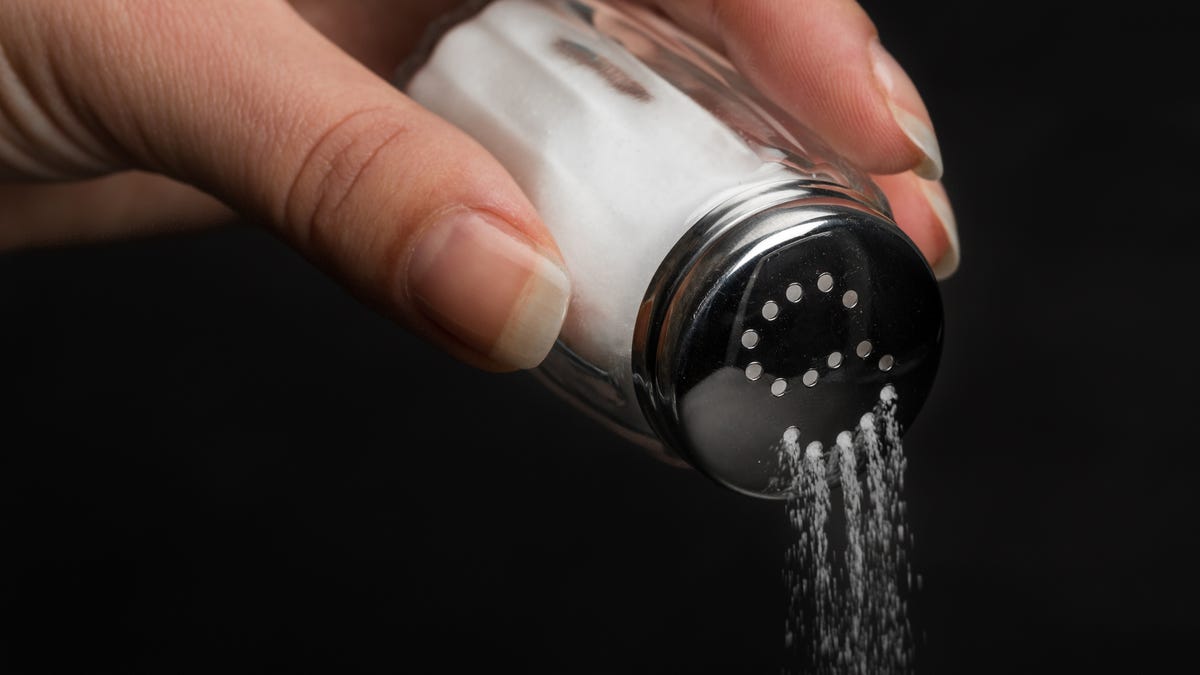Many believe that pink Himalayan salt is the ‘healthiest’ salt. Is there truth to the claims?
Do you prefer sweet snacks or salty ones?
While some enjoy a mix (hello, peanut M&Ms), many people lean towards one side. According to a National Consumer Panel survey, 25% of participants, or 1 in 4, indicated they prefer salty snacks.
However, too much of even a good thing can be harmful. The average American ingests significantly more sodium than the recommended daily limit. Excess sodium can elevate the risk of heart disease, strokes, and kidney disorders.
What type of salt is the healthiest?
Table salt, sea salt, kosher salt, Himalayan salt – does it matter which one you choose for your diet?
Not really, according to Amy Bragagnini, a clinical oncology dietitian and spokesperson for the Academy of Nutrition and Dietetics. The important factor is how much salt you consume. The FDA’s 2020-2025 Dietary Guidelines suggest limiting sodium intake to under 2,300 milligrams per day, roughly equivalent to a teaspoon of table salt.
That said, different salts do have some minor nutritional variations.
A 2023 study that looked into these differences found that Persian Blue salt, which is rich in calcium, might be advantageous for individuals with calcium deficiencies. Additionally, Persian Blue and Atlantic Grey salts were found to have higher levels of iron and zinc.
Pink Himalayan salt has gained popularity among consumers due to its alleged health advantages – its pink color comes from minerals like calcium, magnesium, potassium, and iron.
“While there are some extra nutrients present, you would have to consume a large quantity of pink Himalayan salt to gain any meaningful benefits,” Bragagnini warns. “This is not advisable since you can get those nutrients from whole foods instead.”
Some individuals choose sodium-free salt alternatives like No Salt or Nu-Salt, but Bragagnini advises consulting your doctor before using these substitutes. These products typically replace sodium with potassium, so it’s crucial to ensure that they won’t adversely affect your health.
The key takeaway? Use various types of salt for different cooking methods, but always in moderation.
Is sodium harmful?
Not necessarily – our bodies require a small amount of sodium to function properly.
“As a society, we often vilify sodium, treating it like a bad word,” says Bragagnini. “Sodium is vital for maintaining fluid balance, and is essential for nerve conduction and muscle contraction.”
Sodium also helps prevent iodine deficiencies, a significant issue before the U.S. began using iodized table salt in the 1920s.
The real concern lies in the amounts consumed – excessive sodium can be detrimental, raising the risk of high blood pressure, which in turn can lead to strokes and other diseases.
What is the recommended sodium intake per day?
The FDA’s Dietary Guidelines for Americans advise a maximum sodium intake of 2,300 milligrams daily – about a teaspoon. However, most Americans consume approximately 3,400 mg daily.
The good news is that you can take small steps to reduce your sodium consumption without sacrificing flavor. According to the FDA, about 70% of dietary sodium comes from packaged and prepared foods, rather than salt added during cooking at home.
“Many people, when advised to follow a low-sodium diet, tend to eliminate too much from their meals, which often leads to bland dishes,” Bragagnini observes. Here are her tips:
- Examine labels: Take a closer look at the processed foods you consume. What’s the sodium content per serving and what percentage of your daily value does it represent? Identify the main sodium sources in your diet to better understand what changes are needed.
- Assess your habits: Do you habitually reach for the salt shaker at every meal? How about snacking on salty chips when you’re not really hungry? Recognize these automatic behaviors and determine which are beneficial and which are simply habits.
- Implement small substitutions: Start by switching one item at a time – pick a pasta sauce with lower salt, choose canned beans that contain no added salt, or make homemade marinades instead of buying pre-packaged ones.
- Plan your meals: If you don’t plan meals for the week, you may be tempted to grab something quick or order takeout, both of which can increase your sodium intake.
If you have high blood pressure or other serious health issues that require significant lifestyle changes, be sure to follow your doctor’s advice. Otherwise, be patient and make gradual improvements.
“Over time, your taste buds will adjust,” Bragagnini concludes. “Once you reduce sodium gradually, you’ll begin to appreciate the diverse, natural flavors in food.”
Explore more health tips for your daily nutrition:
- Best fast food choices: Look for this type of menu during your next outing.
- Best cooking oils: While many oils have benefits, two may offer the most advantages.
- Best types of meat: Expert advice on serving a nutrient-rich meal.
- Best beans: Options rich in protein, fiber, and iron.
- Best pasta: This option is high in fiber and protein.
Curious for more? We’re here to help
YSL News investigates the questions you and others pose daily. From “How to prepare overnight oats” to “What is caviar?” and “How to decrease blood pressure?” – we are dedicated to finding the answers for you.

